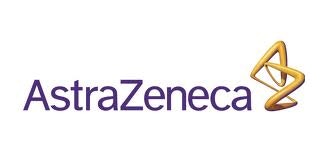In an investor’s quest for yield, stocks in the pharmaceutical industry are a great place to look. In spite of the oft-talked about looming patent cliff, large pharmaceutical companies still have large cash balances and management teams committed to improving shareholder returns. Accordingly, we take a look at two high yielding large pharma companies sporting dividend yields over 5%. (Note that all dividend yield numbers are per Yahoo!Finance)
AstraZeneca (NYSE: AZN) is yielding 8.6% but be wary of the saying “if it’s too good to be true, then it’s probably too good to be true.” We are concerned about AZN’s financial outlook. AZN trades at a meaningful discount to other large pharma names—a little over 7.0x versus the Pfizer (NYSE: PFE) at around 9.0x and the industry average in the 11.0x range. However, Pfizer has a very strong pipeline coming into 2012, additional opportunities to unlock value through the sale/spin-off of the animal and nutrition business, and a growing dividend (read more on Why Hedge Funds Love Pfizer) and has been popular with Ken Fisher and Bill Miller. Wall Street analysts rate the company as a consensus Sell, a rarity in a business that benefits from optimism. Why? First off, AZN faces a multi-year patent cliff that is more severe than its peers in the US and Europe. Second, the Company’s pipeline has not produced positive results; R&D efforts simply have not been successful. And even though Crestor’s US patent is good until 2016, sales will likely slow given that Lipitor has gone generic. Seroquel expires in the US this year and Nexium in 2014. AZN did initiate legal proceedings against the FDA for a preliminary injunction with regards to Seroquel, its schizophrenia medication. Originally, Seroquel generics were going to be allowed on March 26th, but AZN is pushing for a delay until December 2. This will preserve an estimated $2 billion of sales. Even if successful, we still find AZN to be an unattractive stock given the medium-term uncertainty.
AZN’s options are limited to M&A and/or significant cost cutting. AZN has said that it would not make future acquisitions of meaningful size rather that it would continue to return excess cash to shareholders. In the past, AZN has steadily increased cash returned to shareholders in the form of dividends and share buybacks. “In 2011, it used ~67% of its free cash flow to buy back $5.6 billion worth of shares, and in 2012 it guides that it will purchase ~$4.5 billion more.” Regarding cost cutting, AZN announced in February that it will cut another 7,300 jobs through 2014. The number of employees at year-end 2011 was 57,200 worldwide. From 2007, AZN has had the biggest headcount reduction among its peer companies at ~9%. Most of its manufacturing is outsourced, R&D spending is lower than its peers (“AZN currently spends around 13% of versus peer average of ~17%”), and its operating margin is higher than its peers. Thus, it is not clear to us where AZN can keep cutting. That leaves M&A. In recent history, AZN bought MedImmune for ~$15 billion in 2007, Novexel for ~$400M in 2009, and GuangDong BeiKang Pharma in 2011 for an undisclosed amount. We feel like M&A is the likely route in spite of management’s comments. M&A may not be popular with shareholders as it would decrease the amount of cash available to them, and while dividends will probably be held constant at the very least, share buybacks would likely suffer. Ultimately, AZN faces the issue of more expiries than pipeline products, forcing the Company to make some difficult decisions about its future. Holding it for the high dividend is fine, but realize that the dividend yield may appear superficially high if the share price declines.
GlaxoSmith Kline (NYSE: GSK), a Warren Buffet holding, generates a 5.9% dividend yield. Last week, GSK announced a 9,000 patient “real world outcome” program for Relovair (asthma and COPD indications) in Salford, UK. In a follow-up to the January announcement of its intentions, more details were released: 4,000 patients will be recruited in COPD (starting March) and 5,000 patients in asthma (starting May) for a twelve month trial. January data showed cases of fatal pneumonia in the COPD trials, so safety issues will be scrutinized in addition to efficacy and quality of life benefits. Seretide (GSK’s inhaler containing Flixotide and Serevent), is likely going to go off patent in the EU in 2013, so Relovair’s success will be critical in continuing profitability in the asthma space. Relovair is one of thirteen products in GSK’s robust pipeline that includes Zephyr for chronic obstructive pulmonary disease (COPD) and Integrase for HIV.
Last week, GSK also announced the second part of its planned divestment of non-core OTC brands to Omega Pharma for £391 million (2.1x 2011 sales of £185 million). It is expected that net cash proceeds of £310 million will be returned to shareholders in 2012, supporting the dividend yield and continued share buyback. And do not forget that two further divestments remain: divestment of non-US, non-EU OTC assets and Alli (weight loss indication), though the sale of the latter has been disrupted by a temporary supply interruption from Roche. We find GSK to be a compelling opportunity for investors looking for returns via buybacks and dividends and the ample cash to support these moves.
Other high-yielding pharma stocks include Eli Lily (NYSE: LLY) with a 4.9% dividend yield, Sanofi (NYSE: SNY) with a 4.5% dividend yield, and Merck (NYSE: MRK) with a 4.4% dividend yield. Notably, LLY’s solanezumab Phase 3 EXPEDITION trials are set to show “ADAS-Cog improvement of less than 30%,” leading us to believe that management has been conservative in its expectations. With most of the focus on solanezumab, LLY’s 11 other Phase 3 products and cost cutting initiatives may not yet be priced into the stock.





